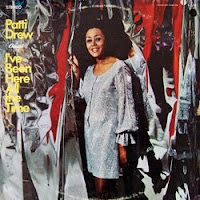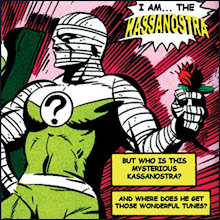The way I figure it though, an OHW K-Land style is a song that doesn’t turn up in the slices. It’s a song that maybe somebody sang once, and it caught on like gangbusters before eventually falling out of rotation. But that means that every one of our one-hit wonders has a story behind it, and that’s something the KassaNostra can get behind! So get comfy, kinderlachen, ’cause to tell this tale, we're going back a couple of decades.
In 1986, one of the teams representing at the Kinderland Olympics was New Zealand. Now, keep in mind that this was way before anybody knew how cool New Zealand actually was, what with the elves and orcs and the oscar-nominated girl-on-whale action (ahem. . . speaking of one-hit wonders), but what made the Tolland culture vultures sit up and take notice was a series of incidents involving nuclear weapons. Seems the Kiwi’s didn’t care for ’em, and weren’t afraid to say so. In 1984, New Zealand banned all nuclear vessels from entering its waters, as a protest against French nuclear testing in the South Pacific. Greenpeace ships had already been running interference out of Auckland, and this policy change had them poised to step up their efforts. In the summer of ’85, a group of French agents sabotaged the Greenpeace flagship Rainbow Warrior while it was moored in Auckland’s Waitemata Harbour. The resulting explosions sank the ship and killed one crewman. Long story short: an international scandal ensued, Greenpeace got a ton of favorable press, so did the test-ban issue, so did New Zealand, and Kinderland had itself a no-brainer of an Olympic team.
 So. . . summer of ’86. Opening-night ceremonies. The New Zealand team (wearing green, natch), blows everyone else (you’ll pardon the pun) out of the water. Can’t really say why: partly because the immediacy of their cause made them compelling; partly because eco-issues weren’t so much in vogue at the time, and it was something relatively new to camp; partly because their cheers and costumes included a lot of sheep, which are always cool. They also closed with an absolute killer of a song, You Can’t Sink the Rainbow, that everybody immediately fell in love with. Trust me, my friends, this one easily makes the KassaNostra’s list of top-ten all-time Olympic presentations.
So. . . summer of ’86. Opening-night ceremonies. The New Zealand team (wearing green, natch), blows everyone else (you’ll pardon the pun) out of the water. Can’t really say why: partly because the immediacy of their cause made them compelling; partly because eco-issues weren’t so much in vogue at the time, and it was something relatively new to camp; partly because their cheers and costumes included a lot of sheep, which are always cool. They also closed with an absolute killer of a song, You Can’t Sink the Rainbow, that everybody immediately fell in love with. Trust me, my friends, this one easily makes the KassaNostra’s list of top-ten all-time Olympic presentations.And yet, something happened between the first and last nights of those Olympic games. Because in that time, the Zealanders came to the startling conclusion that the anti-nukes stuff notwithstanding, their namesake wasn’t really all that team-worthy after all. To hear them tell it, the average Kiwi was nominally uninteresting at best (and criminal at worst, if one considers 300 years suppressing the indigenous Māori peoples). I don’t understand it myself, and lord knows I’ve been on teams with far less to recommend. Maybe they were just really overzealous. Maybe they just weren’t prepared for the inevitable comedown from their opening high. Or maybe they were just a bunch of wise-asses who saw this predicament as the perfect opportunity to sing Phil Ochs’ Love Me, I’m a Liberal. ’Cause that’s exactly what the clever bastards did. And they sang a rousing rendition of it, and everybody immediately fell in love with that too, and it quickly became a top request during music sessions, at least through the rest of the ’80s.
 Here’s two takes on the song, the first being Phil’s original live version, off of the 1966 Elektra album Phil Ochs in Concert. And no, not even I can explain exactly how tears can run down someone’s spine. The KassaNostra loves Phil dearly, but freely admits that it’s kind of a stupid line. What I do know is that even my friends who don’t like folk music in general, or Phil Ochs music in particular, and who insist on comparing him (unfairly) to Dylan, and who generally make me want to smack them upside the head. . . even they think this is a righteous song. And they’re right about that, at least.
Here’s two takes on the song, the first being Phil’s original live version, off of the 1966 Elektra album Phil Ochs in Concert. And no, not even I can explain exactly how tears can run down someone’s spine. The KassaNostra loves Phil dearly, but freely admits that it’s kind of a stupid line. What I do know is that even my friends who don’t like folk music in general, or Phil Ochs music in particular, and who insist on comparing him (unfairly) to Dylan, and who generally make me want to smack them upside the head. . . even they think this is a righteous song. And they’re right about that, at least. The second version is an “updated” cover by Jello Biafra and Mojo Nixon (backed ably by the Toadliquors!), off their 1994 collaborative effort, Prairie Home Invasion. I say quote-updated-unquote because fifteen years later, references to grunge music, the LAPD, and Arsenio Hall make this almost as dated as the original. But it’s a rollicking version, and well worth a listen, and frankly, everyone should own this CD. Seriously, people. . . this is the album that Jello Biafra got his legs broken over. Do the guy a mitzvah and pick up a copy already.
The second version is an “updated” cover by Jello Biafra and Mojo Nixon (backed ably by the Toadliquors!), off their 1994 collaborative effort, Prairie Home Invasion. I say quote-updated-unquote because fifteen years later, references to grunge music, the LAPD, and Arsenio Hall make this almost as dated as the original. But it’s a rollicking version, and well worth a listen, and frankly, everyone should own this CD. Seriously, people. . . this is the album that Jello Biafra got his legs broken over. Do the guy a mitzvah and pick up a copy already. BONUS FEVER: Not many people release their debut album when they hit sixty, but I sure am glad Precious Bryant did. I know very little about this Georgia singer, but I do know that this is an excellent folksy/bluesy version of Fever, off her 2002 album Fool Me Good. I defy anyone to dance to it, but I also defy anyone to not totally groove on it. And really, you just know that anything by anyone with a name as fab as Precious has simply got to kick ass.
BONUS FEVER: Not many people release their debut album when they hit sixty, but I sure am glad Precious Bryant did. I know very little about this Georgia singer, but I do know that this is an excellent folksy/bluesy version of Fever, off her 2002 album Fool Me Good. I defy anyone to dance to it, but I also defy anyone to not totally groove on it. And really, you just know that anything by anyone with a name as fab as Precious has simply got to kick ass.Two quick things, then I’m out. First, if you receivd an email update about this post, then you probably already know it’s the last unsolicited email you’ll be getting. The KassaNostra fancies himself both a lover and a fighter, but he is definitely no spammer. Of course, you’re all welcome to check out this blog at your leisure, whenever and however often makes you happy. But for my biggest fans who want to keep getting updates, send me a blank email with the word SUBSCRIBE in the subject line. That way the KassaNostra can stay in you dreams and in your in-box, boy howdy!
Second, earlier in this post, where I alluded to the song You Can’t Sink the Rainbow, perhaps some of you thought that was going to be the one-hit wonder the KassaNostra was talking about. Yeah, well, so did the KassaNostra. But I’ve been totally stymied in my attempts to locate it, and now I really, really want a copy of it. If anyone out there in alumni-land has any info, no matter how seemingly insignificant, definitely email me or drop a line in the comments. Whosoever leads me to the song shall be handsomely rewarded. My kingdom for the rainbow!
Peace & Vinyl,
The KassaNostra
CODA: My crack research staff has admonished me for not including more info about the Rainbow Warrior. Bad KassaNostra! Bad!






